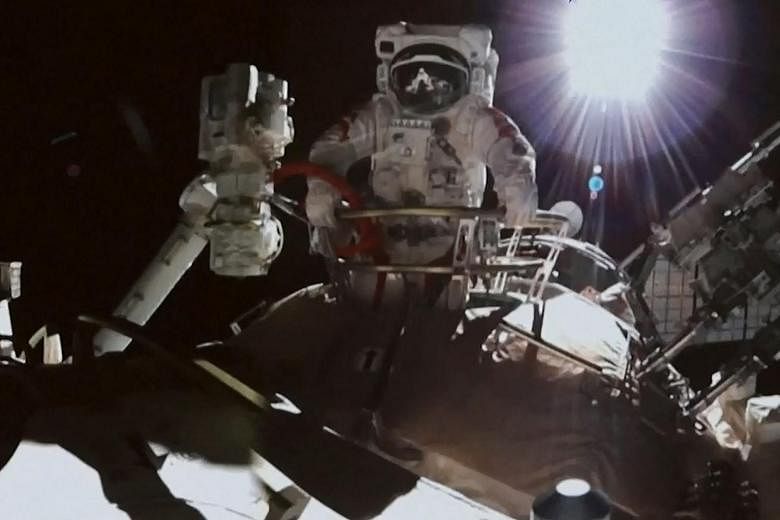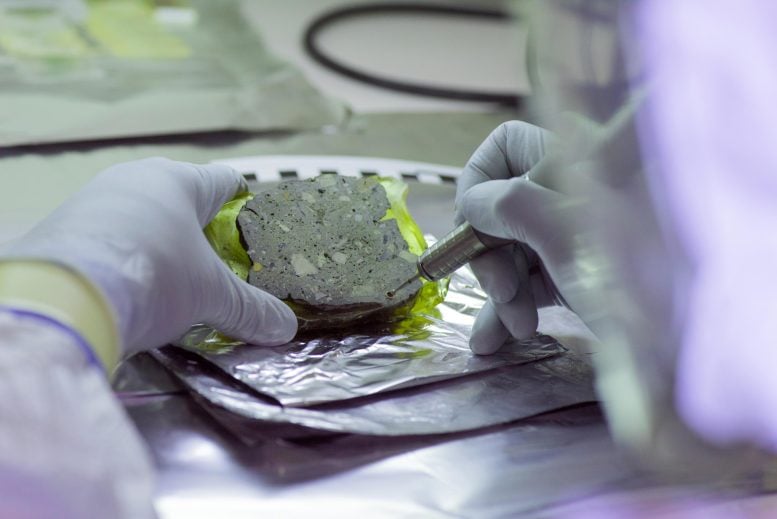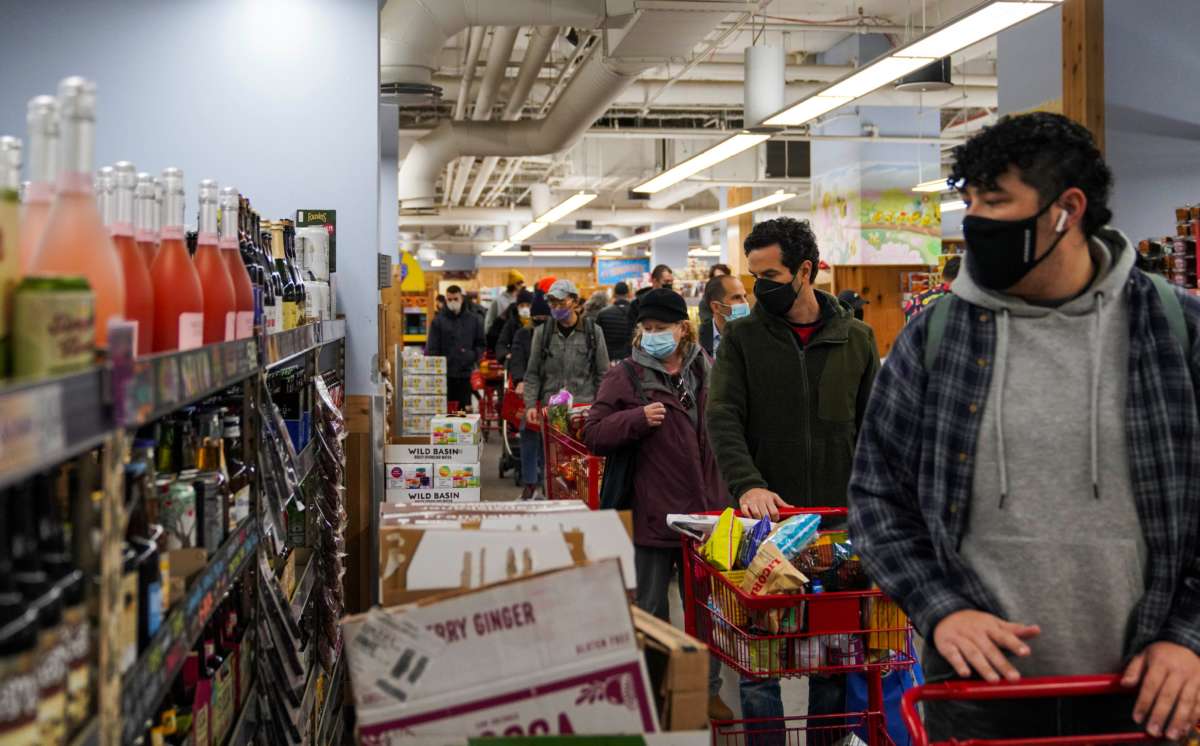Elon Musk's growing broadband satellite mega-constellation is getting the wrong kind of international attention. Earlier this month, China filed what amounts to an official complaint with the United Nations over what it says were two close calls between its space station and SpaceX Starlink satellites.

"Starlink satellites launched by Space Exploration Technologies Corporation (SpaceX) of the United States of America have had two close encounters with the China Space Station," China said in the diplomatic note addressed to the UN Secretary-General. "For safety reasons, the China Space Station implemented preventive collision avoidance control on July 1 and October 21, 2021, respectively."
China's description of the second incident suggests there was minimal or no communication with SpaceX:
"As the (Starlink) satellite was continuously maneuvering, the maneuver strategy was unknown and orbital errors were hard to be assessed, there was thus a collision risk between the Starlink-2305 satellite and the China Space Station. To ensure the safety and lives of in-orbit astronauts, the China Space Station performed an evasive maneuver again on the same day to avoid a potential collision between the two spacecraft."
SpaceX didn't immediately respond to a request for comment.
Astronomer and leading orbit watcher Jonathan McDowell said Monday on Twitter that he confirmed that the near misses and evasive maneuvers described by China did take place as described.
This is not the first international incident involving a SpaceX satellite. In 2019, a European spacecraft had to perform an evasive maneuver to avoid coming too close to a Starlink satellite. SpaceX cited "a bug in our on-call paging system" that caused a communications breakdown leading to the incident.
There is some irony to the latest news. A 2007 Chinese anti-satellite missile test that destroyed one of the country's own satellites created one of the largest orbital debris clouds to date, leading the International Space Station to perform multiple evasive maneuvers over the years. China has also not condemned a similar destructive Russian test earlier this year that again sent ISS astronauts to take cover in capsules docked with the station.
SpaceX has so far launched almost 1,900 Starlink satellites for its global broadband service and has a license to deploy a constellation made up of over 12,000 satellites.

BEIJING (AFP) - Beijing on Tuesday (Dec 28) accused the United States of irresponsible and unsafe conduct in space over two "close encounters" between the Chinese space station and satellites operated by Elon Musk's SpaceX.
Tiangong, China's new space station, had to manoeuvre to avoid colliding with one Starlink satellite in July and with another in October, according to a note submitted by Beijing to the United Nations space agency this month.
The note said the incidents "constituted dangers to the life or health of astronauts aboard the China Space Station".
"The US... ignores its obligations under international treaties, posing a serious threat to the lives and safety of astronauts," Chinese foreign ministry spokesman Zhao Lijian said at a routine briefing on Tuesday.
Starlink, a division of SpaceX, operates a constellation of close to 2,000 satellites that aims to provide internet access to most parts of Earth.
SpaceX is a private American company, independent of the US military and civilian space agency NASA.
But China said in its note to the UN that members of the Outer Space Treaty - the foundation of international space law - are also responsible for actions by their non-government entities.
SpaceX has not responded to a request for comment.
Evasive manoeuvres to reduce the risk of collisions in space are becoming more frequent as more objects enter Earth's orbit, said Dr Jonathan McDowell of the Harvard-Smithsonian Center for Astrophysics.
"We've really noticed the increase in the number of close passes since Starlink started getting deployed," he told AFP.
Any collision would likely "completely demolish" the Chinese space station and kill everyone on board, Dr McDowell added.
The core module of China's station Tiangong - meaning "heavenly palace" - entered orbit earlier this year, and it is expected to become fully operational next year.
Beijing's complaint about Starlink prompted criticism on Chinese social media of SpaceX's billionaire founder Musk, who is widely admired in China.
One hashtag about the topic on the Twitter-like Weibo platform racked up 90 million views Tuesday.
"How ironic that Chinese people buy Tesla, contributing large sums of money so Musk can launch Starlink, and then he (nearly) crashes into China's space station," one user commented.
Mr Musk's electric car maker Tesla sells tens of thousands of vehicles in China each month, though the firm's reputation has taken a hit this year following a spate of crashes, scandals and data security concerns.
"Prepare to boycott Tesla," said another Weibo user, echoing a common response in China to foreign brands perceived to be acting contrary to national interests.
By AFP
Published December 27, 2021

Although Musk is widely admired in China, the reputation of Tesla -- which sells tens of thousands of vehicles in the country each month -- has faltered - Copyright AFP/File STR
Chinese web users slammed billionaire Elon Musk on Tuesday after Beijing said its space station took evasive action to avoid hitting two of his SpaceX satellites, dealing a blow to the tycoon’s reputation in a country that has embraced his Tesla electric cars.
China’s Tiangong space station was forced to take “preventive collision avoidance control” during two “close encounters” with SpaceX’s Starlink satellites in July and October, according to a document submitted to the UN’s space agency by Beijing this month.
On both occasions, the satellites moved into orbits that prompted space station operators to change course, the document said.
“The manoeuvre strategy was unknown and orbital errors were hard to be assessed”, Beijing said of the satellite involved in the October incident, adding that it took action to “ensure the safety and lives of in-orbit astronauts”.
Tiangong — meaning “heavenly palace” — is the latest achievement in China’s drive to become a major space power, after landing a rover on Mars and sending probes to the Moon.
Its core module entered orbit earlier this year, with the station expected to be fully operational by 2022.
Chinese social media users blasted Musk and his companies over the incident, with one hashtag racking up 87 million views by Tuesday morning.
“How ironic that Chinese people buy Tesla, contributing large sums of money so Musk can launch Starlink, and then he [nearly] crashes into China’s space station,” one user commented.
“Prepare to boycott Tesla,” said another, in a nod to a common response in China to foreign brands perceived to be acting contrary to Beijing’s national interests.
Some speculated that Washington would have imposed sanctions if the roles were reversed.
“Why don’t we just do what they do?” one wrote.
California-based SpaceX did not immediately respond to a request for comment.
Although Musk is widely admired in China, the reputation of Tesla — which sells tens of thousands of vehicles in the country each month — has faltered this year following a spate of crashes, scandals and data storage concerns.
But Tesla is still hugely popular and sells around one out of every four of its cars in the country, as well as building a rare wholly-owned factory in Shanghai.
Read more: https://www.digitaljournal.com/social-media/chinese-web-users-blast-musk-over-space-station-near-misses/article#ixzz7GOvdFj5s
Mon, December 27, 2021
BEIJING (Reuters) - Chinese citizens lashed out online against billionaire Tesla founder Elon Musk's space ambitions on Monday after China complained that its space station was forced to take evasive action to avoid collision with satellites launched by Musk's Starlink programme.
The satellites from Starlink Internet Services, a division of Musk's SpaceX aerospace company, had two "close encounters" with the Chinese space station on July 1 and Oct. 21, according to a document submitted by China earlier this month to the U.N.'s space agency.
"For safety reasons, the China Space Station implemented preventive collision avoidance control," China said in a document published on the website of the United Nations Office for Outer Space Affairs.
The complaints have not been independently verified. SpaceX did not immediately respond to a request for comment.
In a post on China's Twitter-like Weibo microblogging platform on Monday, one user said Starlink's satellites were "just a pile of space junk", while another described them as "American space warfare weapons".
With nearly 30,000 satellites and other debris believed to be orbiting the planet, scientists have urged governments to share data to reduce the risk of catastrophic space collisions.
SpaceX alone has deployed nearly 1,900 satellites to serve its Starlink broadband network, and is planning more.
"The risks of Starlink are being gradually exposed, the whole human race will pay for their business activities," a user posting under the name Chen Haiying said on Weibo.
U.S. space agency NASA was forced to abruptly call off a spacewalk at the end of November, citing risks posed by space debris. Musk tweeted in response that some Starlink satellite orbits had been adjusted to reduce the possibility of collisions.
China began constructing the space station in April with the launch of Tianhe, the largest of its three modules. The station is expected to be completed by the end of 2022 after four crewed missions.
Musk has become a well-known figure in China, though Tesla's electric-vehicle business has come under growing scrutiny from regulators, especially after a customer climbed on top of a Tesla car at the Shanghai auto show in April to protest against poor customer service.
(Reporting by Liangping Gao and David Stanway; Editing by Bernadette Baum)
Simina Mistreanu
Mon, December 27, 2021

Elon Musk accused of 'space warfare' after Starlink satellites in near miss with China's space station - Wikipedia
Elon Musk has been accused of "space warfare" after some of the satellites he launched for a groundbreaking global internet project had a near miss with China's new space station.
Satellites from Starlink Internet Services, a division of Musk's SpaceX aerospace company, had two "close encounters" with the Chinese space station in July and October, according to a document submitted by China to the UN's space agency earlier this month.
"For safety reasons, the China Space Station implemented preventive collision avoidance control," China said in a report published on the website of the United Nations Office for Outer Space Affairs.
Mr Musk's Starlink project to blanket the world with universal internet coverage has hit stumbling blocks before in China, which keeps information tightly controlled.
A copy of the report circulated on Monday on Weibo, the Chinese version of Twitter, where several users referred to the project as “space warfare”.

Elon Musk accused of 'space warfare' after Starlink satellites in near miss with China's space station - Xinhua/Shutterstock /Shutterstock
One person called Starlink “a rogue project,” while another said it was “just a lot of space junk”.
SpaceX has so far deployed nearly 1,900 satellites to serve its Starlink broadband network, and Mr Musk has said he ultimately wants to put about 42,000 satellites in orbit.
State-run tabloid Global Times said the satellites could be “used to detect China's space perception capabilities and test whether China can accurately grasp their actions.”
“The aerospace industry is currently concerned about the military application of Starlink satellites because after the deployment of more than 40,000 satellites, the normal launch of other countries will be affected,” the paper said.
Elon's Musk plans interfere with China's 'Great Firewall'
This is not the first time Mr Musk’s space programme has gotten in China’s crosshairs.
In order to achieve his plan of high-speed Internet for all across the earth, Mr Musk initially planned to ask China for permission to build antenna dishes or ground links on its territory to send and receive data from the Starlink spacecraft.
But that plan would have interfered with China’s censored Internet network, known as the “Great Firewall,” which blocks access to websites such as Google, YouTube, Twitter, Facebook and international media in order to keep its 1.4 billion people shielded from any criticism against the country’s communist leadership.
Last month, the Chinese division of Tesla, which is also owned by Mr Musk, announced Starlink would not launch its services in China. Instead, all Tesla cars and charging stations in the country would use network services provided by Chinese operators, with all data kept in the country.
The announcement came as China is forcing foreign companies to keep inside the country all records collected from Chinese consumers. Tesla also needs authorities’ approval before updating certain software on cars in China.
Tesla is estimated to be producing more than half of its vehicles in China, and Chinese sales have helped to make the company profitable.

Elon Musk accused of 'space warfare' after Starlink satellites in near miss with China's space station - NurPhoto /NurPhoto
So Mr Musk has made sure to toe the line when it comes to the Chinese government’s requests.
Tesla apologised earlier this year over its handling of consumer complaints after a customer publicly blamed Tesla brakes for an accident during an auto show in Shanghai.
Mr Musk followed up by singing China’s praise on Twitter during the Communist Party’s centenary, in July. “The economic prosperity that China has achieved is truly amazing, especially in infrastructure!”, Mr Musk tweeted.
On Monday, some Chinese internet users drew a connection between Mr Musk’s space programme and his China electric vehicle operations and sales.
“If someday Starlink’s low-orbit satellites collide with our country’s low-orbit satellites or other spacecraft,” the user wrote, “what will happen to Tesla in China?”







